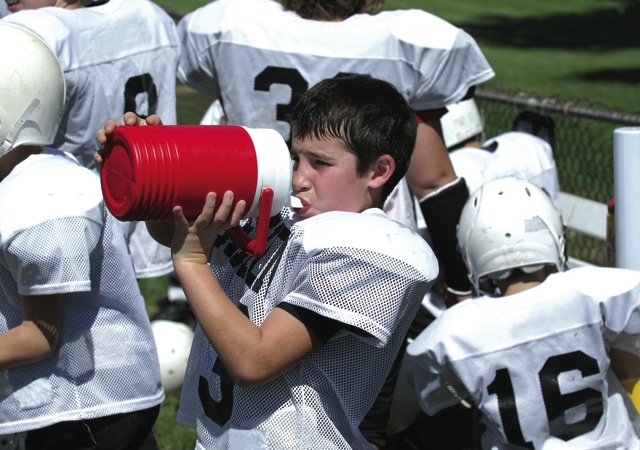Tips for creating a sanitary environment for athletes
Schools would be amazed at what a difference a clean facility can make. They might be more surprised by what can happen if they neglect their duty to create a sanitary, safe atmosphere.
Part of the equation is the cleaning products and methods used for cleaning locker rooms, gymnasiums and even laundry. It’s important to play close attention to what cleaning products are most effective in killing dangerous bacteria that commonly lurk in athletic facilities.
Here are some reminders to keep cleanliness at the forefront of your program.1. Proper laundry systems
Any old washer and dryer won’t cut it, and some are more effective than others. Schools must identify laundry systems that are best equipped to eradicate germs and other viruses that might be found in equipment and uniforms.
Some things to scrutinize include washing temperature and detergent. When it comes to contact sports like football, cuts and scrapes make it easy for viruses to spread from one person to the next. Take great care with your laundry, and make sure uniforms are thoroughly dried.
2. Effective cleaning solutions
Be careful not to choose any standard cleaner off of the shelf. Whether it’s in the weight room, gym or locker room, athletes use a lot of equipment. Naturally, that equipment may be covered in germs that put athletes at risk.
Antibacterial towelettes can kill 99.9% of illness-causing germs. Many are safe on seat pads, arm rests, benches, handgrips, chrome plates, painted surfaces, and steel and rubber surfaces. It’s a quick, cost-effective way to get some of the
most common viral issues under control.
When it comes to bacteria like MRSA, schools must be more careful and especially thorough. Read the label to double-check that the disinfectant is effective against Staphylococcus aureus, or staph.
» RELATED: MRSA: What you need to know
3. Organization and diligence
Who’s responsible for cleaning your athletic facilities, and how often do they do it? These questions are worth asking, and if there’s no clear answer, it’s time to find one.
One simple strategy is to hang a clipboard in each of your facilities. Ask the janitor or facilities manager to initial it with the date each time they do a clean. This reassures those in the athletic program that the facilities have been cleaned, and it provides some accountability if they’re not.
A lot of schools also create a checklist for their janitorial staff. It’s easy to overlook equipment, benches, lockers and other ancillary items, and itemizing each of them is a great reminder.
4. Educate your staff
More eyes are better. That’s why cathletic administrators should make every effort to educate their coaches and athletes about keeping the facilities clean. And, if anyone spots a problem, it should be immediately reported.
At the very least, this keeps cleanliness at the forefront of everyone’s mind. Coaches can pick a handful of players to make sure the locker rooms are picked up before they leave for the day, or coaches can assume the task themselves. The janitorial staff or facility manager can’t be everywhere at once, and it’s likely that any problems will be spotted by those who use the facilities the most.
5. Nip issues in the bud
If athletes come down with an illness or infection, coaches must immediately be notified. In some cases, it may be necessary to quarantine the athlete from the facility and do a deep clean, especially if MRSA is discovered.
This requires a culture that isn’t afraid to report problems to coaches or athletic directors. Athletes may be inclined to keep quiet about their health, especially if it results in a loss of playing time, so coaches must stress the importance of reporting any ailments.
Caring for the athletic facilities and the health of athletes can be a simple task if all the right pieces are in place. Consider discussing your own strategies for keeping your facilities clean at your next coaches meeting.





